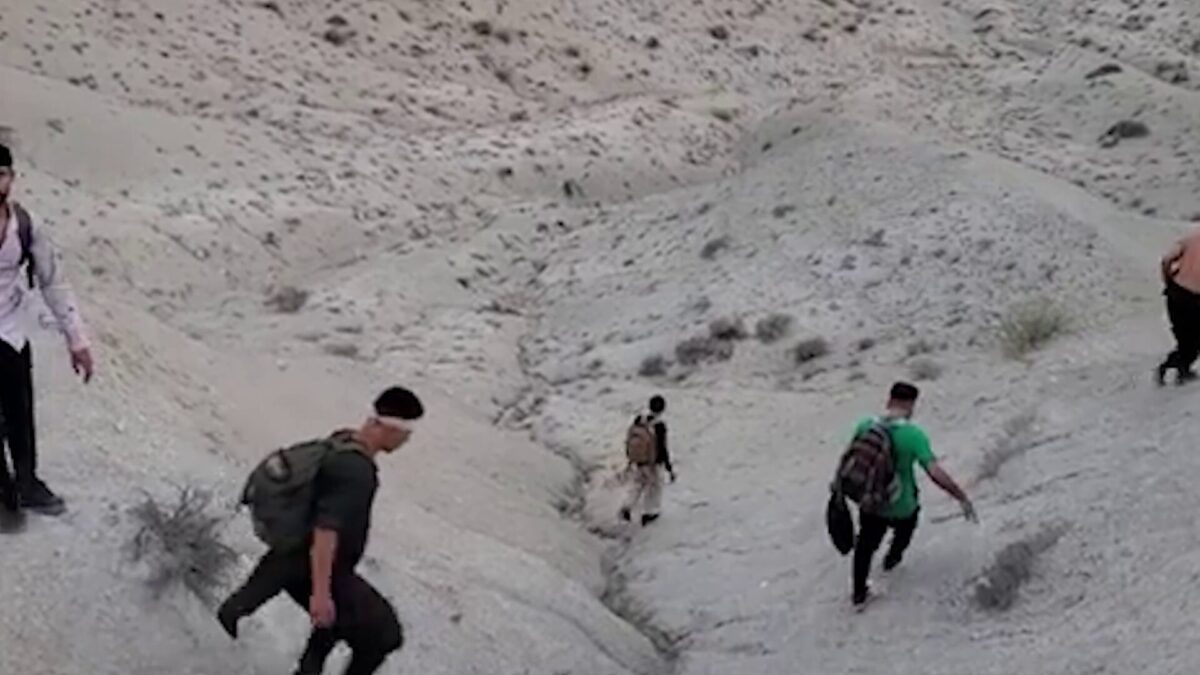A recent study by Amu, conducted across eight provinces in Afghanistan, reveals that in the past year, 1,744 individuals and 641 families have undertaken illegal migration.
Amu’s research involved fieldwork with 40 individuals from different parts of these provinces. Of those interviewed, 38 believed that illegal migration has increased over the past year, while one respondent said it had decreased, and another noted a slight decline in their local area.
The study also included conversations with individuals who had firsthand experience with illegal migration, focusing on the dangers and challenges faced along these perilous routes.
The dream of a peaceful life, free from economic hardship and insecurity, has driven hundreds to risk their lives on these dangerous journeys over the past year, often with little choice but to take the difficult path of illegal migration.
The fieldwork, conducted in Parwan, Paktia, Daikundi, Bamyan, Faryab, Farah, Jawzjan, and Kunduz provinces, sought opinions from both men and women, with five people interviewed from each province.
Of the 40 participants, 38 confirmed that illegal migration had surged in their areas, while one respondent reported a decline and another noted only a slight decrease. Collectively, they estimated that 1,744 individuals and 641 families from their communities had migrated illegally in the past year.

According to the details shared by respondents, 178 women and 468 children, teenagers, and young adults were among those who embarked on these dangerous journeys.
Key Findings on Illegal Migration from Eight Provinces:
- 1,744 individuals and 641 families migrated illegally in the past year.
- Among them were 178 women and 468 minors or young adults.
When asked about the reasons behind this surge in illegal migration, all respondents cited economic challenges and a lack of job opportunities as the primary drivers. Additionally, 12 respondents linked the increase in migration to the return of the Taliban, threats to former government soldiers, and the Taliban’s restrictions on girls’ education.
Others mentioned the collapse of the republic and the search for a better life as contributing factors.
Main Reasons for Illegal Migration:
- All 40 respondents: Unemployment and economic hardship
- 12 respondents: Taliban’s return to power, threats to former soldiers, and restrictions on education, particularly for girls
- Others: Political change and the pursuit of a better life
Most illegal migrants from Afghanistan head first to Iran and Pakistan, with some eventually attempting to reach Turkey, Greece, Germany, and other European countries.
Destination Countries for Illegal Migrants:
- Primarily Iran and Pakistan
- Later destinations include Turkey, Greece, Germany, and other European nations
Amu’s research also includes interviews with victims of human trafficking networks. Some interviewees, citing security concerns, requested anonymity. Many of those forcibly deported from Iran described the immense risks they faced on their journeys.
One migrant recalled how their child was trapped on one side of the border while they were deported to the other. “People should avoid illegal routes; it’s incredibly difficult. I saw people whose children were left behind while they were deported. They should get passports and travel legally,” the migrant said.

Another victim shared their story of attempting to escape poverty and unemployment, only to be met with exploitation and danger. Despite spending significant amounts of money, they were unable to reach their destination.
“It’s very hard to go illegally. I tried three times to reach Turkey, each time spending weeks on the journey and hundreds of dollars. In the end, I didn’t make it. Even here, after we leave home, we fall into the hands of traffickers who buy and sell us along the way,” said one migrant.
Some families, in their desperate search for educational opportunities and a way out of poverty, endure the grueling and dangerous trek across deserts and mountains. “I traveled to Iran without a passport, through forests and mountains. It’s so dangerous. We go hungry and thirsty, knowing our lives and our children’s lives are at risk,” said another victim.
These migrants often encounter fatal dangers along the way, whether from vehicle accidents or being shot at by border guards. “There are deaths along the way—cars overturn, or we’re shot at. My message to people is, don’t go illegally. It’s too dangerous,” one person said.
Others, like one migrant who lost their sewing machine—their family’s source of income—felt they had no choice but to leave. “When my sewing machine broke, I had to leave to make a living. But I faced so many problems. The Iranian police demanded bribes. My message is: get a passport, travel legally. It’s not worth it.”
Many young people fall victim to the false promises of human traffickers, drawn in by the hope of a better future. But, as in the case of Elias, a teenager interviewed by Amu under a pseudonym, the harsh reality often brings them back home, empty-handed. “I migrated illegally because of poverty and unemployment. Traffickers lure young people with false promises. I didn’t find peace or economic security and was forced to give up my education.”
Reflecting on their experiences, several victims emphasized the importance of avoiding human traffickers and illegal migration routes. “My message is simple: don’t trust human traffickers, and don’t choose illegal migration,” one said.
A recent report by the International Organization for Migration (IOM) indicates that between August 25 and 31 alone, 96,522 Afghans left the country, heading for Iran and Pakistan. The report, published on Sunday, found that 67,944 people entered Iran during that week, while 28,578 crossed into Pakistan. The report shows that most movements occur through official border points for various reasons—family visits, religious purposes, economic reasons, health, education, or social/cultural purposes.





